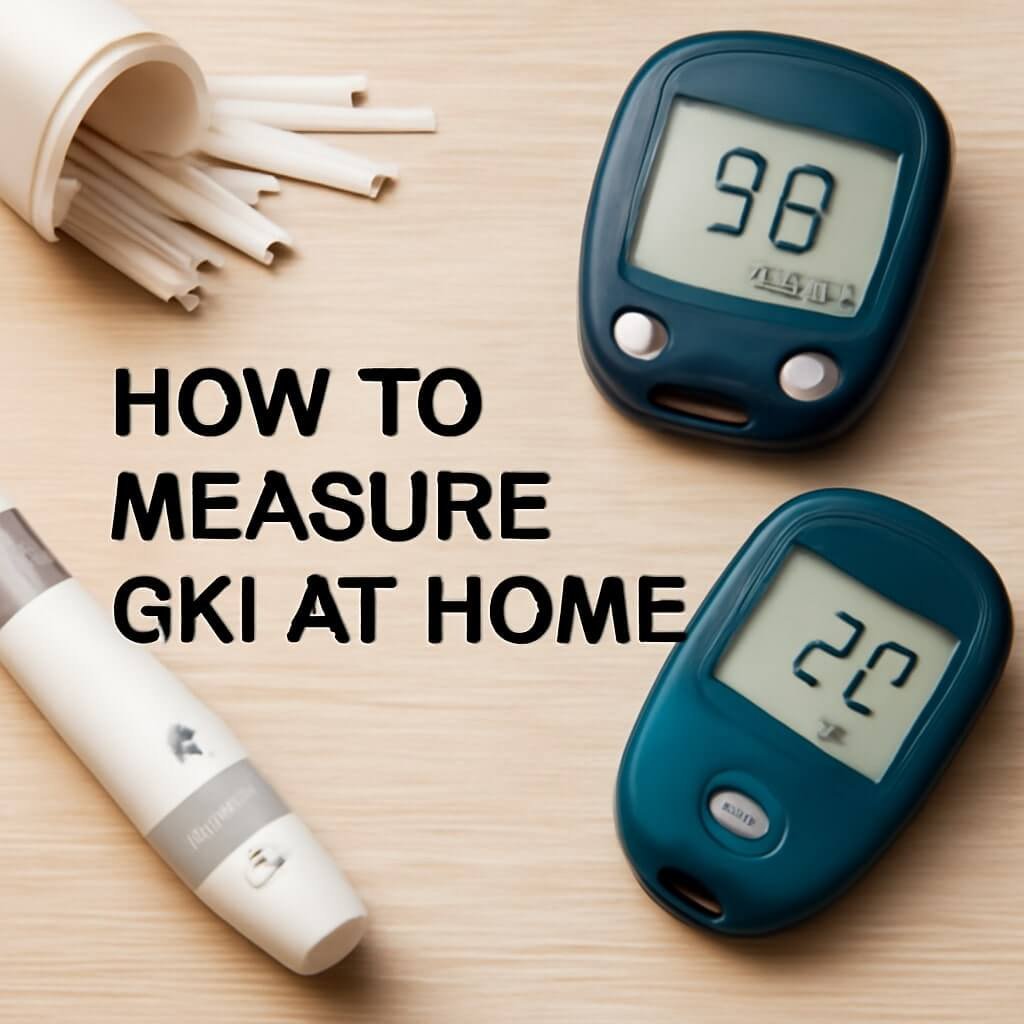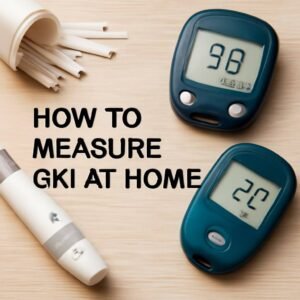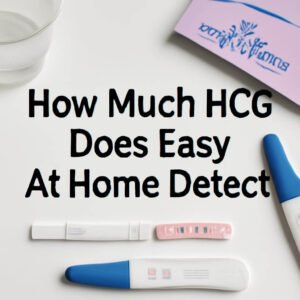The Glucose Ketone Index (GKI) is a powerful health metric that helps track your metabolic state, especially during ketogenic diets or fasting. Measuring GKI at home allows individuals to monitor their progress in achieving ketosis, which is essential for fat burning, brain health, and chronic disease management. This index compares blood glucose levels to ketone bodies, providing a clear picture of metabolic balance.
Understanding the Science Behind GKI
GKI is calculated by dividing blood glucose by blood ketones. Blood glucose is the sugar your body uses for energy, while ketones are molecules produced during fat metabolism. When glucose levels are low and ketones are high, it suggests the body is in ketosis—a fat-burning mode. This scientific balance is key for people managing weight, epilepsy, cancer, or neurodegenerative diseases.
Tools Needed to Measure GKI at Home
Before you begin, you need specific tools to measure blood glucose and ketones accurately at home.
Blood Glucose Meter
A reliable blood glucose meter is essential. Look for models that offer quick results, ease of use, and affordability. Popular meters include Accu-Chek, OneTouch, and Contour Next.
Ketone Meter
Ketone meters come in different types: blood ketone meters (most accurate), breath ketone meters (less invasive but less precise), and urine strips (least reliable). Blood ketone meters like Keto-Mojo are widely recommended for precision.
Step-by-Step Guide to Measuring Blood Glucose
- Wash your hands thoroughly.
- Insert a test strip into your glucose meter.
- Use a lancet to prick the side of your fingertip.
- Apply the blood drop to the strip.
- Wait for the meter to display your glucose level (usually mg/dL or mmol/L).
Step-by-Step Guide to Measuring Blood Ketones
- Prepare your ketone meter and insert a ketone test strip.
- Use a lancet on a clean fingertip.
- Place the blood drop on the ketone strip.
- Read the ketone concentration displayed in mmol/L.
Calculating Your GKI Value
To find your GKI, use the formula:
GKI = (Blood Glucose in mmol/L) ÷ (Blood Ketones in mmol/L)
If your glucose meter shows mg/dL, convert to mmol/L by dividing by 18.
Example:
Blood glucose = 90 mg/dL → 5 mmol/L
Blood ketones = 2 mmol/L
GKI = 5 ÷ 2 = 2.5
Interpreting Your GKI Results
| GKI Range | Metabolic State | Interpretation |
|---|---|---|
| 1 or less | Deep ketosis | Optimal for therapeutic ketosis |
| 1-3 | Moderate ketosis | Great for weight loss and metabolic health |
| 3-6 | Light ketosis | Some fat burning, but not full ketosis |
| 6+ | No ketosis | Primarily glucose metabolism |
Lower GKI values indicate stronger ketosis and fat-burning metabolism.
Common Mistakes When Measuring GKI at Home
- Using expired or incorrect test strips
- Not calibrating meters properly
- Testing at inconsistent times (fasting vs post-meal)
- Not washing hands before testing
- Misreading units (mg/dL vs mmol/L)
Benefits of Tracking GKI Regularly
- Optimises fat loss by ensuring you’re in ketosis
- Helps tailor ketogenic diet and fasting protocols
- Provides early warning signs for metabolic imbalances
- Supports therapeutic uses like epilepsy or cancer management
Troubleshooting Common Problems
- Inconsistent readings? Ensure meter calibration and proper strip storage.
- Low ketones despite fasting? Check diet adherence and hydration.
- High glucose with low ketones? Possible insulin resistance or carb intake.
Advanced Tips to Improve GKI Accuracy
- Test at the same time daily, ideally morning before eating
- Avoid high-intensity exercise right before testing
- Stay hydrated for consistent blood composition
- Track food intake to correlate diet with GKI results
Frequently Asked Questions (FAQs)
Can I use urine strips instead of blood ketone meters for GKI?
Urine strips are less accurate for GKI because they measure acetoacetate, not beta-hydroxybutyrate ketones, which blood meters measure. Blood ketone meters provide reliable data for GKI calculation.
How often should I measure my GKI at home?
Daily measurements are ideal to track trends, but some prefer 3-4 times weekly, depending on goals.
Does dehydration affect GKI readings?
Yes, dehydration can concentrate blood components and skew glucose or ketone values.
Can GKI help with managing diabetes?
GKI can offer insights, but diabetic patients should consult healthcare providers before relying solely on it.
What is the best time of day to measure GKI?
Morning fasting measurements tend to be most consistent.
Can medications affect my GKI results?
Certain drugs may impact glucose or ketone levels; consult your doctor for specifics
Conclusion: Mastering GKI Measurement for Better Health
Measuring GKI at home is an empowering way to understand your metabolic health. By following these steps, using the right tools, and interpreting results accurately, you can optimise your ketogenic journey or therapeutic protocol effectively. Remember, consistency and proper technique are key. Take control of your health by mastering GKI measurement today!













